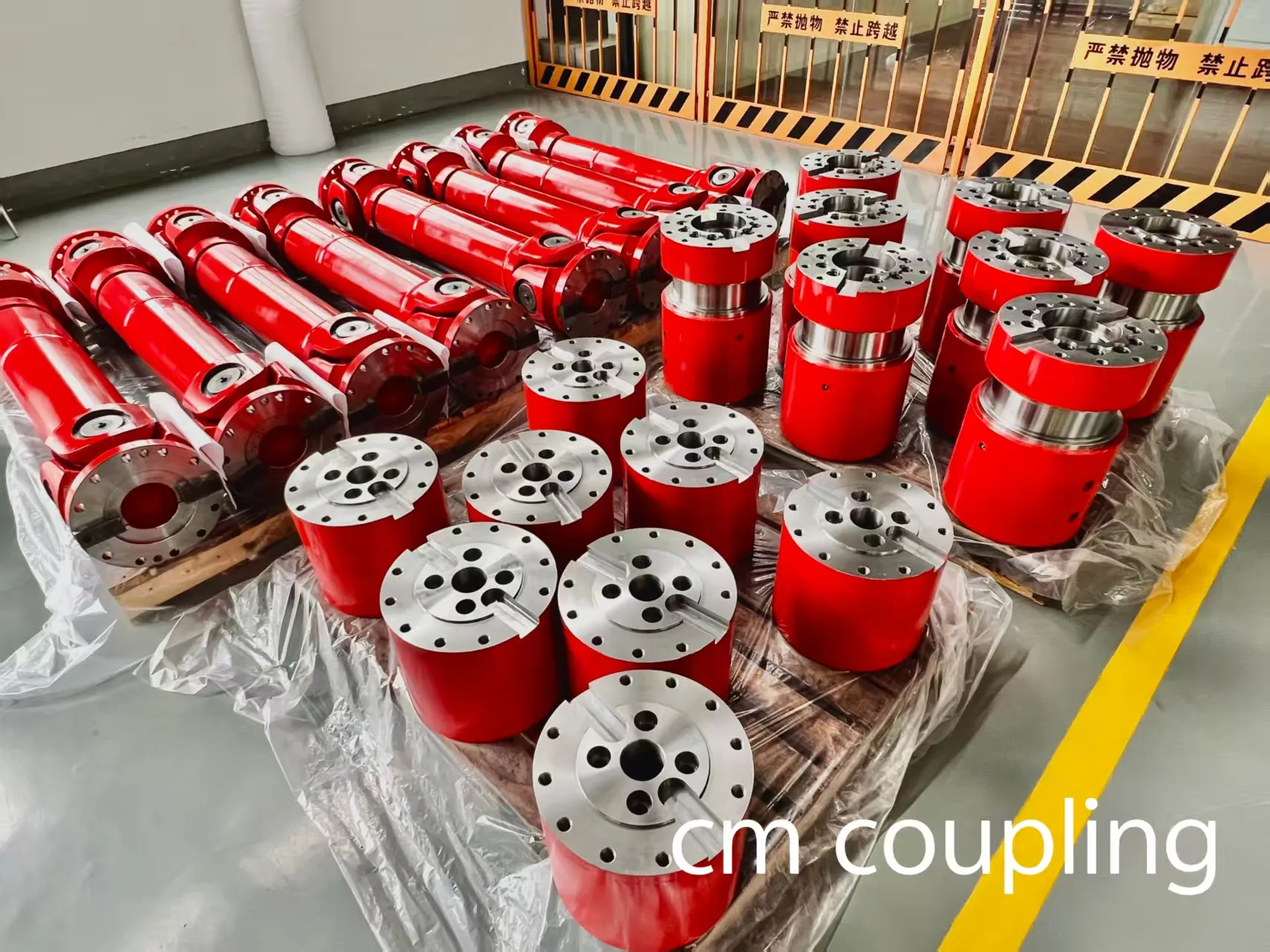Copyright © 2025 Chuangming Coupling (Jiangsu) Co.,Ltd.
Universal Couplings: The "Flexible Joints" of Mechanical Transmission
2025-08-29
In mechanical transmission systems, when there is an angle deviation or axial displacement between two shafts, the universal coupling serves as the key "joint" for connecting them. It is widely used in fields such as automobiles, machine tools, and construction machinery, ensuring stable transmission.
Its core principle relies on the cross-axis structure, consisting of the driving shaft, driven shaft, cross-axis, and fork-shaped joint. When the driving shaft rotates, the power is transmitted through the fork-shaped joint to the cross-axis, and then to the driven shaft. The cross-axis allows the angle between the two shafts to reach 30°-45°, but a single set of coupling may result in uneven transmission. In engineering, double universal couplings are often combined to make the fork-shaped joints at both ends of the intermediate shafts coplanar and have equal angles, eliminating angular velocity fluctuations.
According to structure, universal couplings are mainly divided into three types: the cross-axis type has a simple structure and low cost, suitable for medium-low speed and medium torque scenarios, such as automotive transmission shafts; the ball cage type can perform high-speed constant-speed transmission under a large angle (up to 47°), being the core of car front-wheel drive; the flexible type with elastic elements can absorb vibrations and buffer, suitable for precision equipment.

When selecting, attention should be paid to the rated torque (reserved 20%-30% safety margin), maximum angle,and speed range. Maintenance-wise,in the automotive field,lubricating oil should be added every 2-3 thousand kilometers,and in construction machinery,measures should be taken to prevent sand and regular checks for wear and sealing to avoid failures.
Universal couplings,with their flexible compensation capabilities,have become indispensable components of mechanical systems,and their exquisite design supports the operation of many industries.
In mechanical transmission systems, when there is an angle deviation or axial displacement between two shafts, the universal coupling serves as the key "joint" for connecting them. It is widely used in fields such as automobiles, machine tools, and construction machinery, ensuring stable transmission.
Its core principle relies on the cross-axis structure, consisting of the driving shaft, driven shaft, cross-axis, and fork-shaped joint. When the driving shaft rotates, the power is transmitted through the fork-shaped joint to the cross-axis, and then to the driven shaft. The cross-axis allows the angle between the two shafts to reach 30°-45°, but a single set of coupling may result in uneven transmission. In engineering, double universal couplings are often combined to make the fork-shaped joints at both ends of the intermediate shafts coplanar and have equal angles, eliminating angular velocity fluctuations.
According to structure, universal couplings are mainly divided into three types: the cross-axis type has a simple structure and low cost, suitable for medium-low speed and medium torque scenarios, such as automotive transmission shafts; the ball cage type can perform high-speed constant-speed transmission under a large angle (up to 47°), being the core of car front-wheel drive; the flexible type with elastic elements can absorb vibrations and buffer, suitable for precision equipment.

When selecting, attention should be paid to the rated torque (reserved 20%-30% safety margin), maximum angle,and speed range. Maintenance-wise,in the automotive field,lubricating oil should be added every 2-3 thousand kilometers,and in construction machinery,measures should be taken to prevent sand and regular checks for wear and sealing to avoid failures.
Universal couplings,with their flexible compensation capabilities,have become indispensable components of mechanical systems,and their exquisite design supports the operation of many industries.